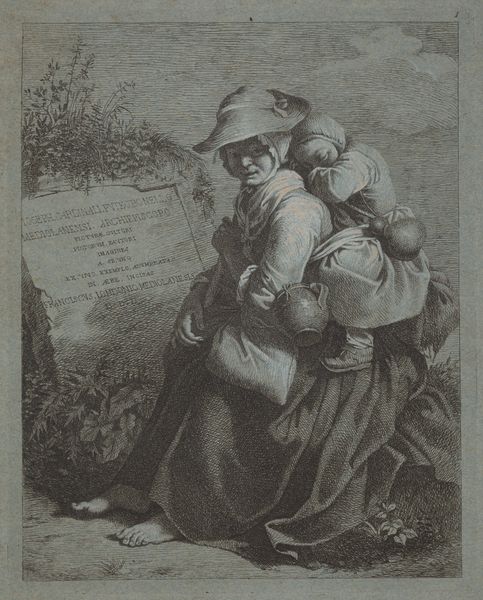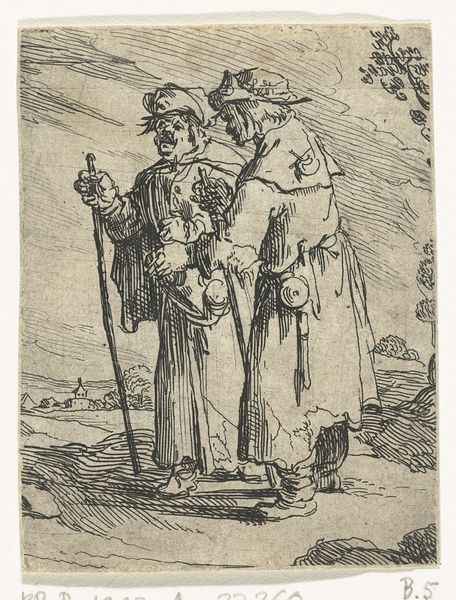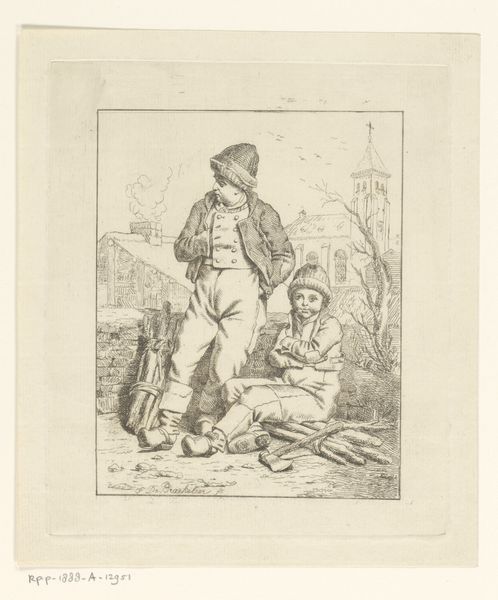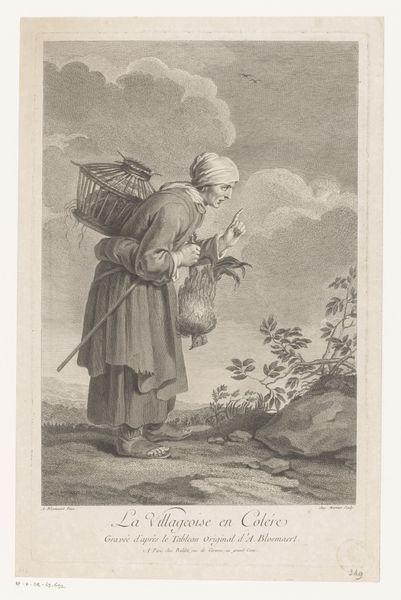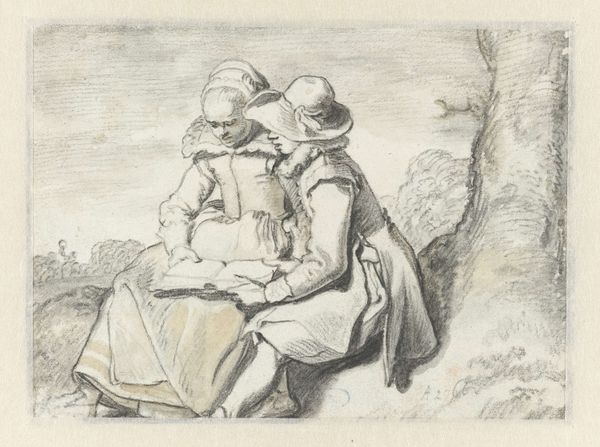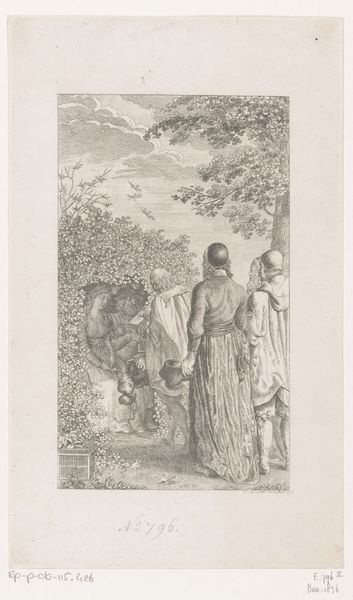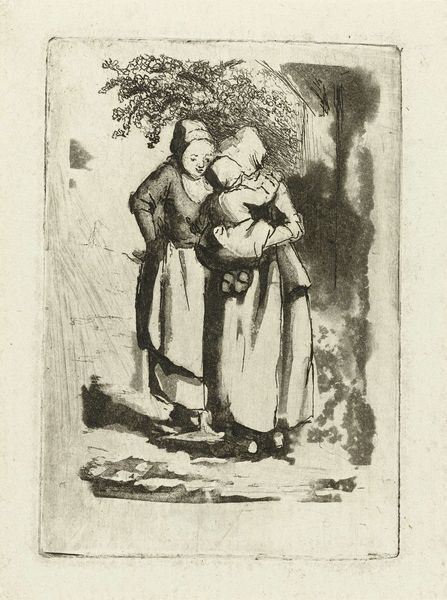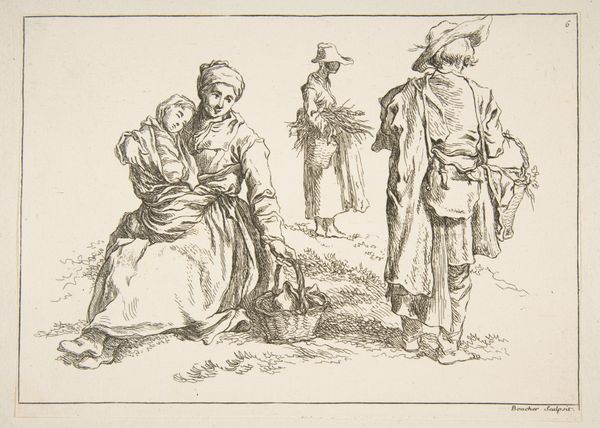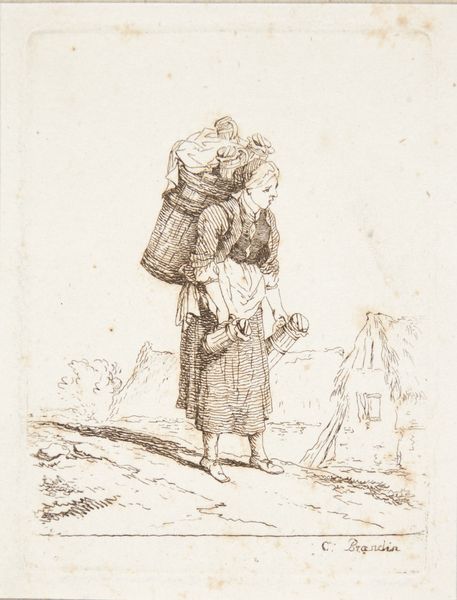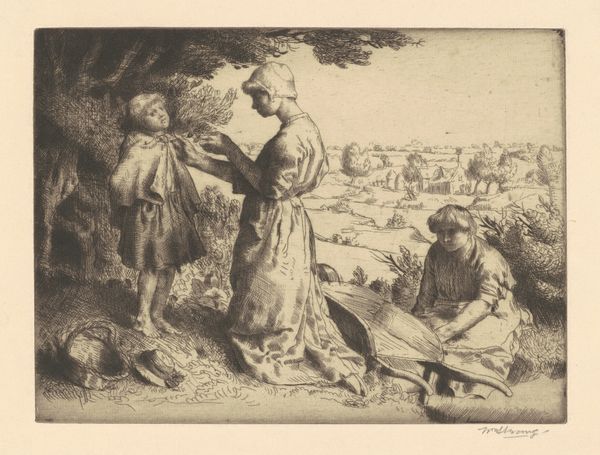
print, engraving
#
portrait
# print
#
old engraving style
#
folk-art
#
19th century
#
genre-painting
#
engraving
Dimensions: height 184 mm, width 144 mm
Copyright: Rijks Museum: Open Domain
Curator: This engraving, attributed to Antonio Morghen and created sometime between 1798 and 1853, is titled "Vrouw met slapend kind op de rug, bij steen gezeten," or "Woman with sleeping child on her back, sitting by a stone." Editor: There's such a quiet exhaustion about her, a real sense of the weight she carries, literally and figuratively. You can feel it in the stoop of her shoulders and in those bare feet on the rough ground. Curator: Absolutely. The artist employs a rather limited palette, characteristic of engravings, yet skillfully manipulates light and shadow to create depth and volume. Notice how the stark white of the stone contrasts against the woman's darker clothing, drawing the eye directly to that compositional anchor. The lines are economic but incredibly descriptive, wouldn’t you agree? Editor: Yes, the lines denote so much detail about her material circumstances. The print’s sharp, unwavering lines create a narrative around labor and resilience. Observe her worn clothes and the mundane objects, perhaps water gourds, affixed to the bundle that also carries her child—they speak volumes about daily survival and are testaments to the everyday. I wonder, was this image mass-produced for a broad consumer base, offering a glimpse into the lives of working women for those more affluent? Curator: It’s highly plausible. And thinking about the woman's gaze, cast downwards, there’s a subtle asymmetry in the composition—the child nestled on her back serves as a counterweight, a balance between burden and blessing. A fascinating formal construction, don't you think? Editor: Definitely. Thinking of it as “genre-painting” brings context too, doesn’t it? I imagine her making a grueling journey with the resources and limitations of that time. Considering all of these things – it gives depth to the visual form that your approach isolates, perhaps? Curator: A valid point; integrating societal implications refines the narrative the image presents. I see a dialogue created through art with history that is undeniable. Editor: Yes. Her bowed figure makes me grateful for what I have and pensive about the labor so many others perform to merely exist. Curator: For me, it reaffirms the potential of engraving, of any medium really, to transcend its materiality and invoke profoundly human experiences.
Comments
No comments
Be the first to comment and join the conversation on the ultimate creative platform.
